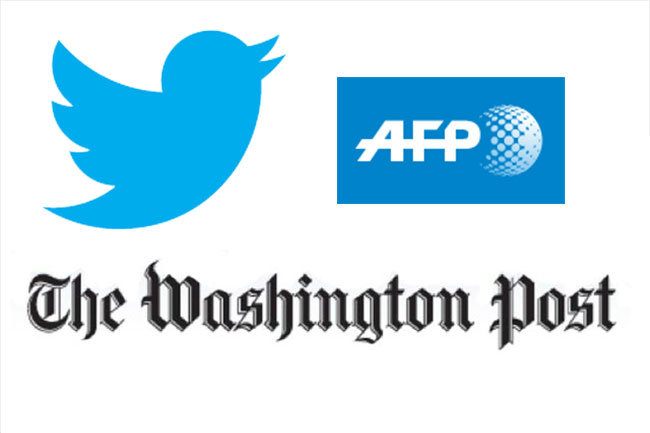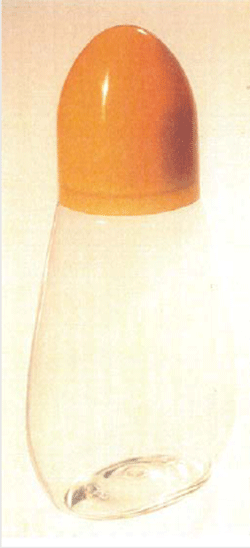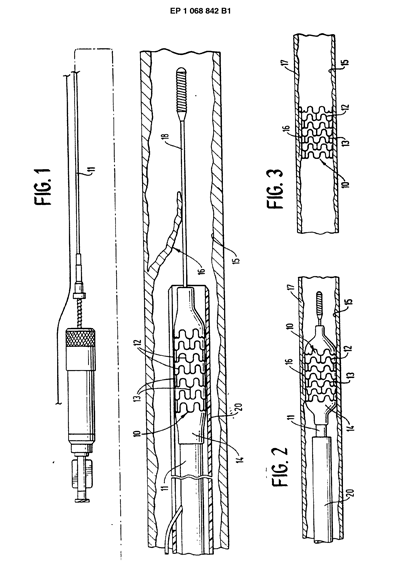“4.9. Partly in connection with the above it has become plausible that G-Star will be able to prove in proceedings on the merits that the relevant section of the public will link the G-Star trade marks to Pepsi RAW as used by PepsiCo. Such linking - viz. that the relevant section of the public, when seeing the Pepsi RAW sign being used, associates it with the G-Star RAW trade marks without likelihood of confusion being required - is considered even more unlikely since in the preliminary opinion of the court and in spite of arguments of G-Star which partly point in a different direction, the goods concerned are (virtually all) clearly non-similar goods (cf. paras 49 to 55 of the Intel judgment, also in connection with the reputation issue of the G-Star RAW trade marks that are invoked, see above para 4.7). PepsiCo rightly alleges that the market surveys carried out by G-Star did not concern this issue. Otherwise, too, the court holds the preliminary opinion that G-Star has not made a sufficiently plausible case on this issue, even though G-Star did state, so the interim injunction judge understands, that it views this issue in particular also in connection with what it calls the "crossovers - co-branding" practised by it; collaboration with other trade mark proprietors resulting in RAW-Cannondale bicycles, RAW-Defender Landrovers, RAW-Secco Prosecco, RAW Ferry (boat in Amsterdam canals), RAW Arne Jacobson chair, RAW Billiard and G-Star Raw Nights (parties) - with in any case the G-Star RAW trademark being used as well in each case except for the Landrover, the chair and the Prosecco, so it appears. G-Star alleges that the RAW trade marks are lifestyle trade marks which stand for a certain non-conformist, adventurous, daring, "out of the ordinary" lifestyle and target a young, trendy public, which Pepsi RAW [sic! translator] allegedly also targeted or started targeting with its Pepsi RAW. One should not lose sight of the fact that the existence or otherwise of such a link must be assessed globally, taking into account all factors relevant to the circumstances of the case (para 62 Intel). In the absence of such a link in the mind of the public, there is no "sub c" infringement (Intel para 31). But even if such a link should be likely, partly because of the co-branding and the other circumstances mentioned, then merely this link alone is not sufficient to make the invocation of "sub c" infringement successful (cf. para 32 Intel).
4.10. In the preliminary opinion of the court there is no proof of (prima facie) evidence that by its use of the Pepsi RAW sign PepsiCo is taking unfair advantage of or causing detriment to the distinctive character or the repute of G- Star's trade marks and this, so the Intel judgment shows (paras 32, 37, 38 and 71), is required for the successful invocation of the "sub c" ground. This issue must also be assessed globally in the same sense as stated above in para 4.9 (para 79 Intel). The Court of Justice makes strict demands where it states clearly that the circumstances that a) the earlier trade mark has a huge reputation for certain specific goods (namely jeans) and b) those goods or services are not similar or not similar to a substantial degree to the goods or services of the challenged sign (in the present case: soft drink) and c) the earlier mark is unique in respect of any goods or services (as in the case of [intel], which as stated is not the case for [raw]) and d) said sign brings to mind the earlier mark, are not sufficient proof in the sense referred to here.
4.11. According to paras 38 and 39 of that judgment the minimum requirement for assuming that such unfair advantage is being taken (called "latching onto" by G- Start) is that G-Star must prove that there are elements based on which it can be concluded that there is a serious risk that such an injury will occur in the future. It is the preliminary opinion of the court that the allegations G-Star has put forward so far do not justify such a conclusion. The allegation that the RAW element is the "DNA for G-Star" and that G-Star could actually be equated with RAW is relevant only in the sense that this must be so in the perception of this element of the relevant section of the public. G-Star has failed to demonstrate sufficiently that this section of the public will so strongly perceive this element in this sense argued by G-Star, that this will push the usual meaning of the adjective "raw" so much into the background in the context of the Pepsi RAW sign as to constitute proof of the serious risk referred to above. Apart from the grievances referred to in para 4.12, no further substantiated facts have been alleged or emerged in this respect and that does not suffice in the preliminary opinion of the court. It must be borne in mind that G-Star does not have the exclusive right to target a young (and therefore at the same time partly trendy and non-conformist ) public. Such targeting has already been a constant for a very long time in Pepsi's generally known publicity (accessible to the public via the Internet), with inter alia the following striking examples: "Now It's Pepsi, for Those Who Think Young" (early 19sixties), "Pepsi, The Choice of a New Generation" (1984) and "GeneratioNEXT" (1997).
4.12. Insofar as detriment to distinctive character is the steppingstone for G-Star, it is so that according to the Intel judgment proof of such detriment requires evidence of a change in the economic behaviour of the average consumer of G-Star clothes and related products and services as a result of the use of Pepsi RAW, or a serious likelihood that such a change will occur in the future (para 77 Intel). This, too, is a fairly high hurdle and it is the preliminary opinion of the court that insufficient real evidence has been put forward in this case to clear it. In fact the only available evidence at present is an alleged concern felt by some G-Star retailers and their reported expressions of similar concerns by some consumers. It is striking that this seems to occur mainly in Scandinavia, where Pepsi RAW is not on the market, and hardly at all in any country in which Pepsi RAW was launched early this year, as PepsiCo rightly alleges. PepsiCo rightly raises questions about these alleged murmurings from the market. The court rejects G- Star's presenting this as proof of confusion (written summary of oral argument by Hoyng, Nos. 86 et seq.), which according to Intel makes infringement a given. The same applies to G-Star's allegation that this constitutes "clear proof" in the aforementioned sense and that it is "clear" that this would result in changed commercial behaviour of consumers. It is the preliminary opinion of the court that all this is definitely insufficient.
4.13. It is the preliminary opinion of the court that insufficient prima facie evidence has been provided for the allegation that - in addition to the alleged trade mark infringement - PepsiCo has been unlawfully latching onto the reputation of G- Star and its "RAW concept" as G-Star calls it. It has been insufficiently refuted that the use of the adjective 'raw' in present-day trendy usage has acquired an accepted descriptive meaning as outlined above in para 4.7. It is the preliminary opinion of the court that it is not unlawful for PepsiCo to use the word in this sense in its publicity. Insufficient prima facie evidence has been provided in these interim injunction proceedings of G-Star's allegation that such use injures its "RAW crossover concept"."
 In't kort: Buitenland. Auteursrecht, twitter, licentie, foto's. Agence France Presse dient een vordering in tegen fotograaf Daniel Morel strekkende tot vaststelling dat AFP de auteursrechten van Morel niet heeft geschonden, met betrekking tot bepaalde foto's voor commerciële gebruik. In reactie hierop heeft Morel een tegenvorderingen ingediend tegen AFP, Getty Images, Inc. en the Washington Post (hierna: AFP e.a.). Morel stelt zich op het standpunt dat AFP e.a. inbreuk hebben gemaakt op zijn auteursrechten en daarmee de Digital Millennium Copyright Act (DMCA) hebben geschonden. Morel heeft foto's van na de aardbeving in Haïti geplaatst op zijn Twitter en Twitpic-account. Ter discussie staat of de foto's zodra deze zijn geplaatst vrij beschikbaar zijn.
In't kort: Buitenland. Auteursrecht, twitter, licentie, foto's. Agence France Presse dient een vordering in tegen fotograaf Daniel Morel strekkende tot vaststelling dat AFP de auteursrechten van Morel niet heeft geschonden, met betrekking tot bepaalde foto's voor commerciële gebruik. In reactie hierop heeft Morel een tegenvorderingen ingediend tegen AFP, Getty Images, Inc. en the Washington Post (hierna: AFP e.a.). Morel stelt zich op het standpunt dat AFP e.a. inbreuk hebben gemaakt op zijn auteursrechten en daarmee de Digital Millennium Copyright Act (DMCA) hebben geschonden. Morel heeft foto's van na de aardbeving in Haïti geplaatst op zijn Twitter en Twitpic-account. Ter discussie staat of de foto's zodra deze zijn geplaatst vrij beschikbaar zijn.
 Inleidende woorden van Thijs van den Heuvel,
Inleidende woorden van Thijs van den Heuvel,  Prof. mr. Willem A. Hoyng,
Prof. mr. Willem A. Hoyng,  ’s-Hertogenbosch Court of Appeals, 14 October 2008, HD 103.003.078, Michaud Family Apicultures S.A. vs. Graham Packaging Company B.V.
’s-Hertogenbosch Court of Appeals, 14 October 2008, HD 103.003.078, Michaud Family Apicultures S.A. vs. Graham Packaging Company B.V. District Court of The Hague, 28 August 2008, KG ZA 08-777,
District Court of The Hague, 28 August 2008, KG ZA 08-777, 




















































































